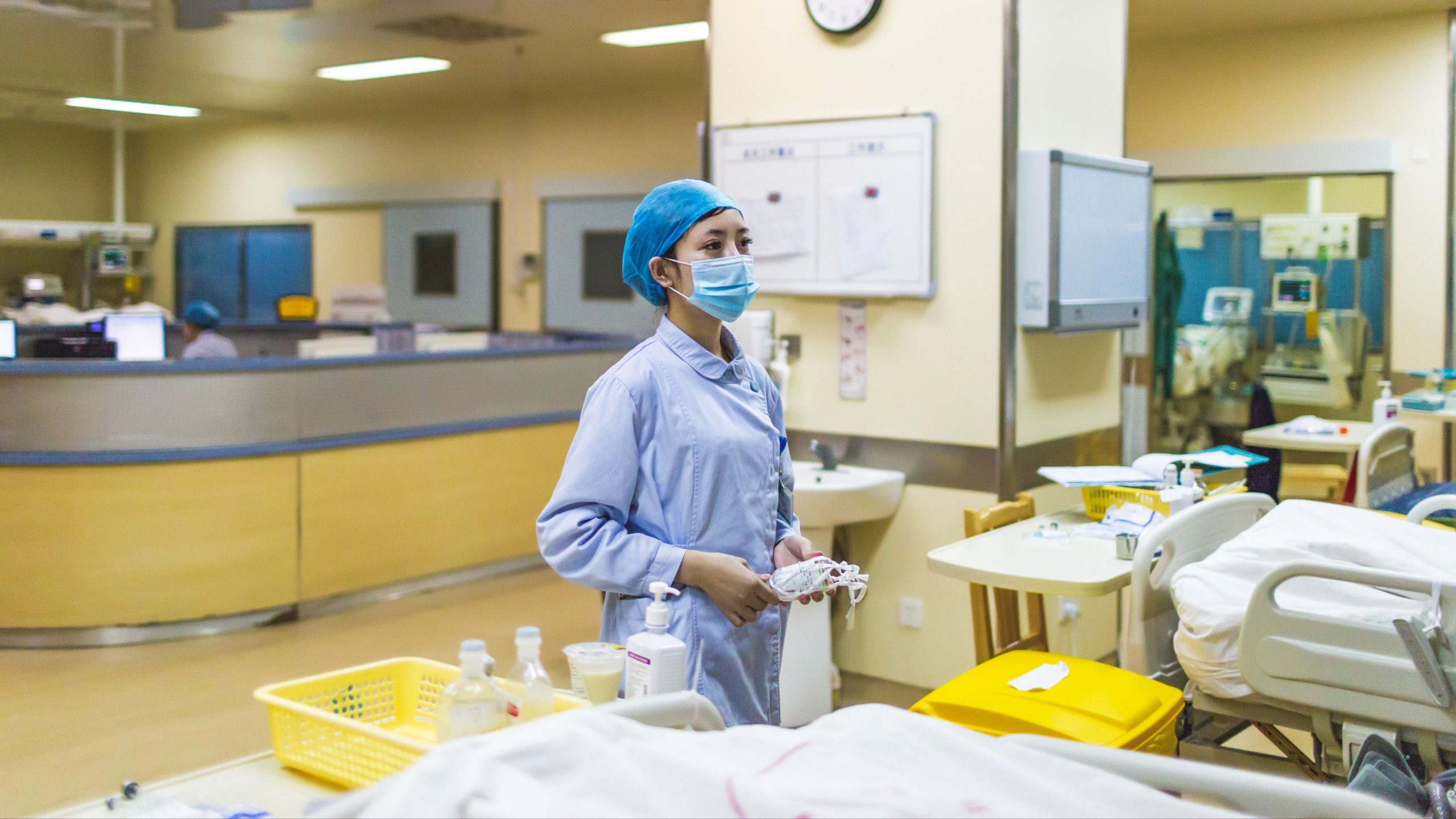
COVID-19 LUNG TRANSPLANT
One story I feel compelled to write is that of a young patient who almost lived. He was a man in his late 40s with no previous medical problems at all other than being perhaps somewhat overweight. He had been in our ICU for about three weeks before I “met” him through the siding glass ICU room door. He had been on the ventilator briefly but had transitioned to BiPAP with some success.

He met those requirements: he was in bad shape and not expected to improve significantly, but not in such bad shape that he was unable to breathe, was otherwise heathy and fairly young. He was cognitively intact, so much that he was very aware of what was happening. He was accepted as a transplant candidate.
He stayed at our facility for a few days waiting for a bed at the transplant facility to open. He had a few close calls on my shifts. One time he dared to sit up, from a 45 degree angle resting in the bed to a 90 degree angle for about 60 second so he could use the urinal. He never took the BiPAP off. The result was about an hour of struggling to breathe, oxygen levels in the 60s (normal is 94-100, usual range we intubate someone is the 75-80 range with oxygen support or a device like BiPAP). Every time we looked in on him while he was struggling and we were trying to prevent him from being intubated he will give us a thumbs up. He knew the consequence of going back on the ventilator; he’d lose his only chance at survival. Whenever we looked in at him and he was awake, regardless of if he was actually okay, he would give us the thumbs up. Everything is fine, because things could be so much less fine.
He was transported to the other hospital to wait for a transplant to become available, so that he would be able to get the lungs immediately if they found a match. Something went wrong during transport. It’s unclear exactly what happened, but some piece of breathing equipment failed. The transport time between our facility and the transplant facility is about 15 minutes, less than 10 miles in distance. In that 15 minute transport, he deteriorated so much that his oxygen level dropped precipitously, he was working hard to breathe, and his mental status had started to deteriorate. He was emergently intubated and placed on a ventilator as soon as he got into the receiving facility. In the span of 15 minutes he lost his transplant eligibility, and over about 12 hours continued to deteriorate. He was placed on medication drips to keep his blood pressure from dropping below the threshold at which his organs would continue to function. His family was allowed to come see him, which is only allowed when someone is dying during COVID. He died shortly after.

His death isn’t anyone’s fault. The paramedics caring for him couldn’t have known their equipment would malfunction, especially since they had likely used the same machine for the patients they had transported during the rest of their day. The incoming facility did what they had to do to preserve his life when he arrived. It was the worst outcome possible for his circumstances. He was never guaranteed a transplant, nor was getting a new lung or set of lungs a guaranteed success for him, but at least he had a chance at the transplant facility.
His story is tragic, as are a lot of the stories of the other people here in the ICU. On a personal level, I think one of the hardest parts about being surrounded by these awful stories is that I don’t feel anything at all. I understand, superficially, why they’re heartbreaking, but I just feel numb to everything on anything but the most emotionally shallow, cognitive level. I’m told it’s normal to be this way, but how can that be true?
JACKIE CHRISTIANSON
Author
Share this post
Nurses International is a non-profit entirely focused on helping nurses obtain the education and the support they need to make a difference in developing nations worldwide.
We connect colleges and institutions with experts who can take their nursing programs to the next level. We help establish new nursing programs where they’re needed most. And we eliminate the barriers that stand between students and education.
QUICK LINKS
CONTACT US
FOLLOW US
EIN: 46-4502500